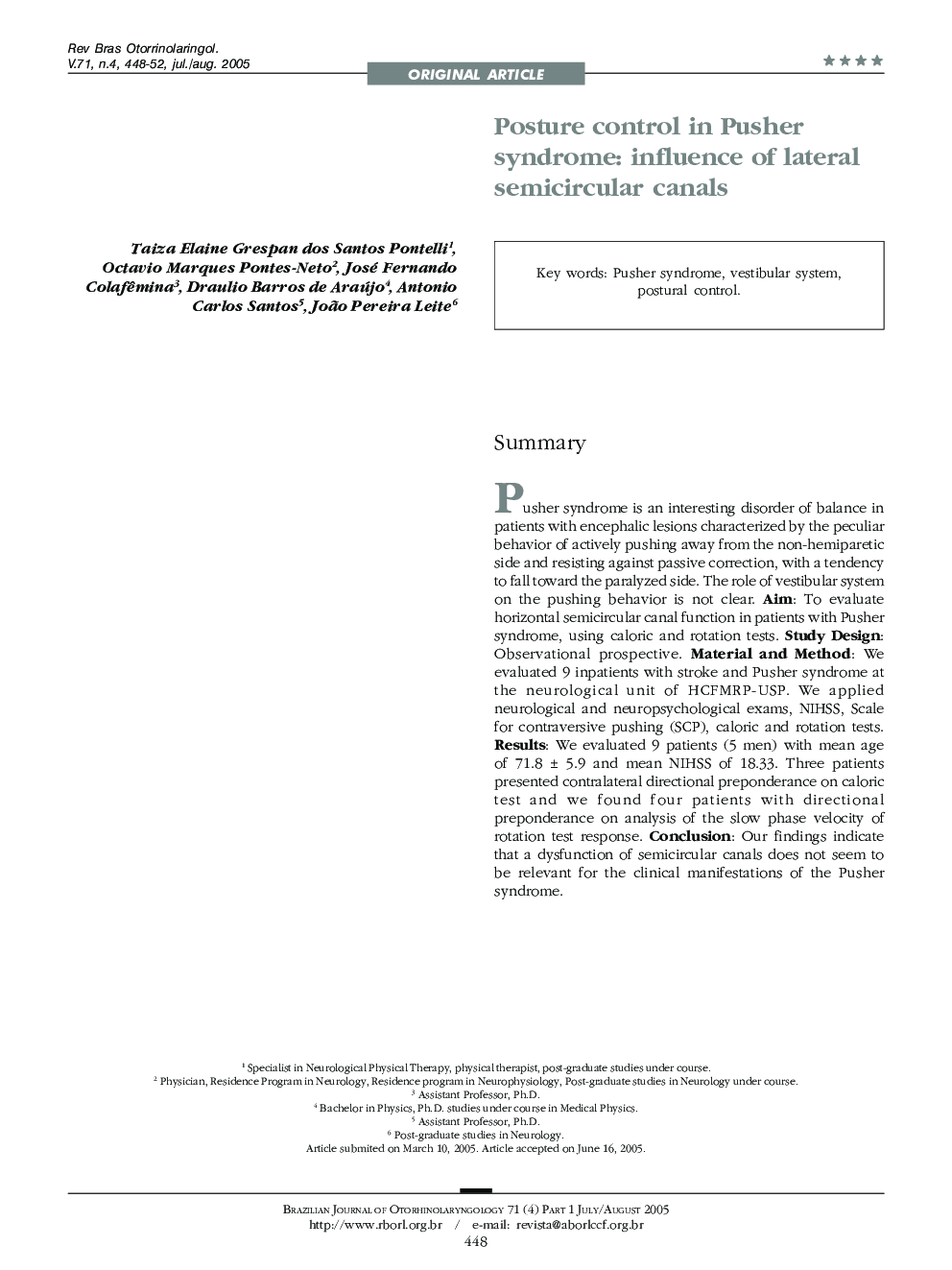| Article ID | Journal | Published Year | Pages | File Type |
|---|---|---|---|---|
| 10086910 | Brazilian Journal of Otorhinolaryngology | 2005 | 5 Pages |
Abstract
Pusher syndrome is an interesting disorder of balance in patients with encephalic lesions characterized by the peculiar behavior of actively pushing away from the non-hemiparetic side and resisting against passive correction, with a tendency to fall toward the paralyzed side. The role of vestibular system on the pushing behavior is not clear. Aim: To evaluate horizontal semicircular canal function in patients with Pusher syndrome, using caloric and rotation tests. Study Design: Observational prospective. Material and Method: We evaluated 9 inpatients with stroke and Pusher syndrome at the neurological unit of HCFMRP-USP. We applied neurological and neuropsychological exams, NIHSS, Scale for contraversive pushing (SCP), caloric and rotation tests. Results: We evaluated 9 patients (5 men) with mean age of 71.8 ± 5.9 and mean NIHSS of 18.33. Three patients presented contralateral directional preponderance on caloric test and we found four patients with directional preponderance on analysis of the slow phase velocity of rotation test response. Conclusion: Our findings indicate that a dysfunction of semicircular canals does not seem to be relevant for the clinical manifestations of the Pusher syndrome.
Related Topics
Health Sciences
Medicine and Dentistry
Otorhinolaryngology and Facial Plastic Surgery
Authors
Taiza Elaine Grespan dos Santos Pontelli, Octavio Marques Pontes-Neto, José Fernando Colafêmina, Draulio Barros de Araújo, Antonio Carlos Santos, João Pereira Leite,
